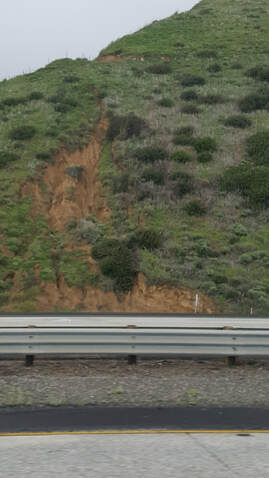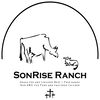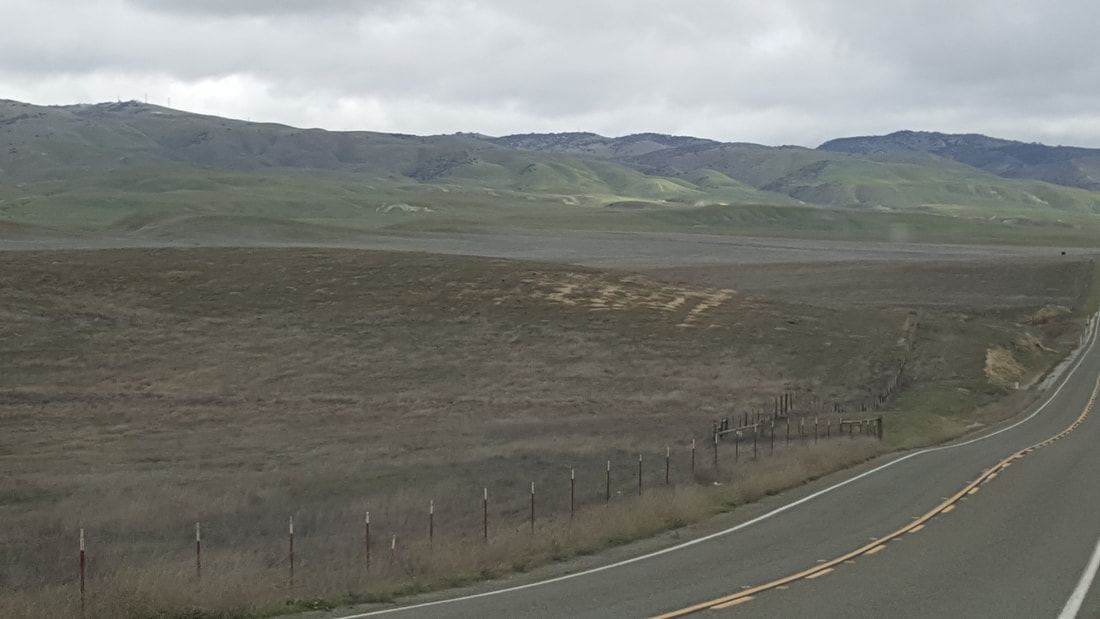 Photo showing non-natural erosion (as opposed to man induced erosion from activities such as tillage) and the absence of large herbivores. Nutrients follow water flow in this scenario.
Photo showing non-natural erosion (as opposed to man induced erosion from activities such as tillage) and the absence of large herbivores. Nutrients follow water flow in this scenario. Of course, he was correct (Old 'G was a pretty sharp guy) - and, my 6th grade teacher had helped to solidify in my mind why attempting to fly like Superman, off of my backyard shed would likely result in a not-so-super outcome, cape notwithstanding.
What is fascinating about gravity is not just its immutability, but its ubiquity - the laws of gravity apply even to the tiny nutrients in an ecosystem on a farm. All nutrients follow gravity. The nitrogen, potassium and phosphorus, however small inside a decaying plant stem - will eventually follow gravity. In fact, they have for time immemorial.
So what?
Long before you and I were here, all that stuff (nutrients in plants, soil, rock, etc) has been moving down hill. Slowly, almost inperceptily, down, down, down. Nutrients move about 10 feet per year in the direction of gravity. Down a river bank, down a hillside, down a ditch.
Ever wonder why the water in a normally dry river becomes dark brown after the first hard rain of the winter? The answer is nutrients, following gravity - in fact, scientists tell us we have lost a full 1/3 of all the earth's topsoil to erosion (gravity) in the last 100 years of human history.
But when you multiply that times thousands of years, and extrapolate the inevitable outcome, you realize that, in theory, everything should be in the sea by now!
So why isn't it?
Well, it turns out that God created a certain, very special species of animals designed to counteract this exact phenomenon. They are called ruminants, aptly named for the existence of the rumen - a special stomach chamber that "holds" food for later consumption. Much like a kangaroo that can safely carry its offspring in a marsupial pouch, a ruminate, such as a cow or bison (buffalo) can pack a lunch for later consumption.
All ruminants are animals of prey - they have no inherent defense mechanisms for warding off predators. A cow can't fight off a tiger very effectively. In an unadulterated natural setting they buch together in a very tight group (ever heard the phrase "safety in numbers"). Once formed in this tight group, called a herd, they stay close together and move to a river valley, where grass is lush, green and plentiful. They rapidly gulp down as much grass as they can pack into their first stomach (the rumen) and take off for the hills to keep an eye out for predators (who need water from the river valley).
In and along the river valley, they consumed, on average 75 lbs of grass each. Now, that's a lot of grass...think of how heavy your lawnmower clipper bag is when it is full of lush, wet grass? So, they must be strong and large to carry out this task. Think of how big a bull is - we have had some as heavy as a small car!
Anyway, the herd then head up to the highest point they can find, allowing if possible a full, 360 degree view of their surroundings. They then sit down, relax in safety, and chew their cud, or more accurately "ruminate". This is a regurgitation of fermented grass from the rumin back to the mouth for manual chewing and machination. Now, I don't know about you, but regurgitation doesn't sound like fun to me. That's because you and I are monogastrics. We have only one stomach, and a very acidic one at that. A ruminate is a multi gastric with multiple, alkaline based digestive stomachs designed to digest thru fermentation something we cannot - grass. In fact, feeding them anything besides grass, like corn, monkeys this system up pretty bad and makes them sick.
Once rumination is complete, they stand up, stretch and... poop! That's right, they deposit yesterday's fermented, digested, nutrient rich grass onto the hilltop complete with all the bacteria and microbiological activity to begin life anew - feeding, fertilizing and promoting hilltop plant life.
So, what eventually happened to all those nutrients in the river valley?
Right! they ended up on the hilltop - defying the laws of gravity.
Ready for question two?
What eventually happens to an ecosystem without large-ruminant herbivores?
Right, again! The precious nutrients end up in the sea, not on the hilltops where they are desperately needed.
All this is to say, that large herbivores (read Cows as the great Bison herds that once numbered in the millions are gone from the landscape) are absolutely essential to a properly functioning ecosystem.
Does anyone remember "cattle free by '93" campaign? It was the well intentioned, but horribly misguided conception that all cattle must be off public land by 1993. It worked - the camplain did at least. But the results have been disastrous! If you look around at public land today, a mere 15 years later, you begin to see the beginnings of desertification. Small brown strips are starting to appear on hillsides everywhere.
Without cattle on public lands, my children's children will eventually be living in a sand dune.
Next time you are out for Sunday drive, take a look at all the land where you know there are not large ruminant herbivores present - do you see what I see?
The desert is coming!


 RSS Feed
RSS Feed